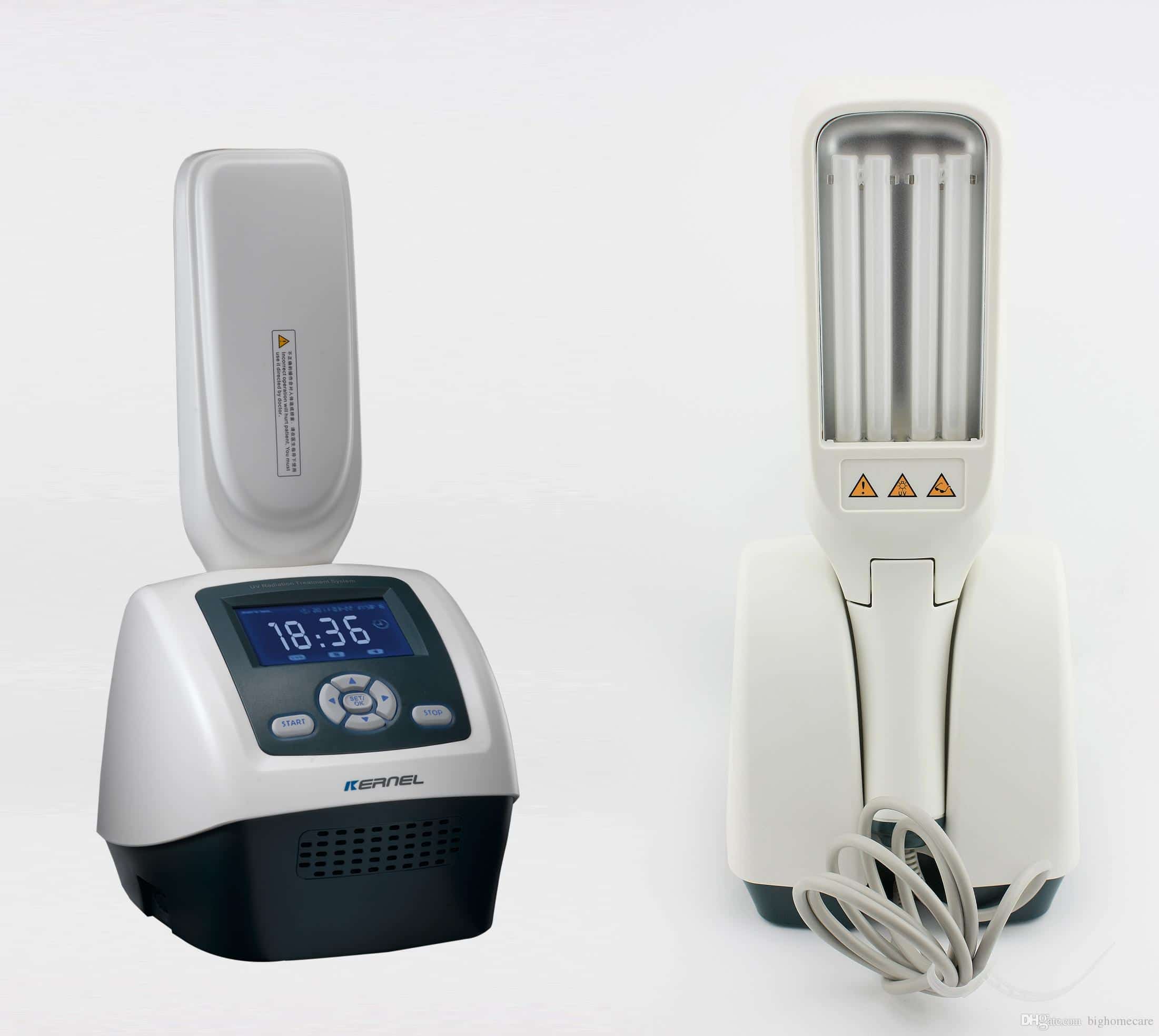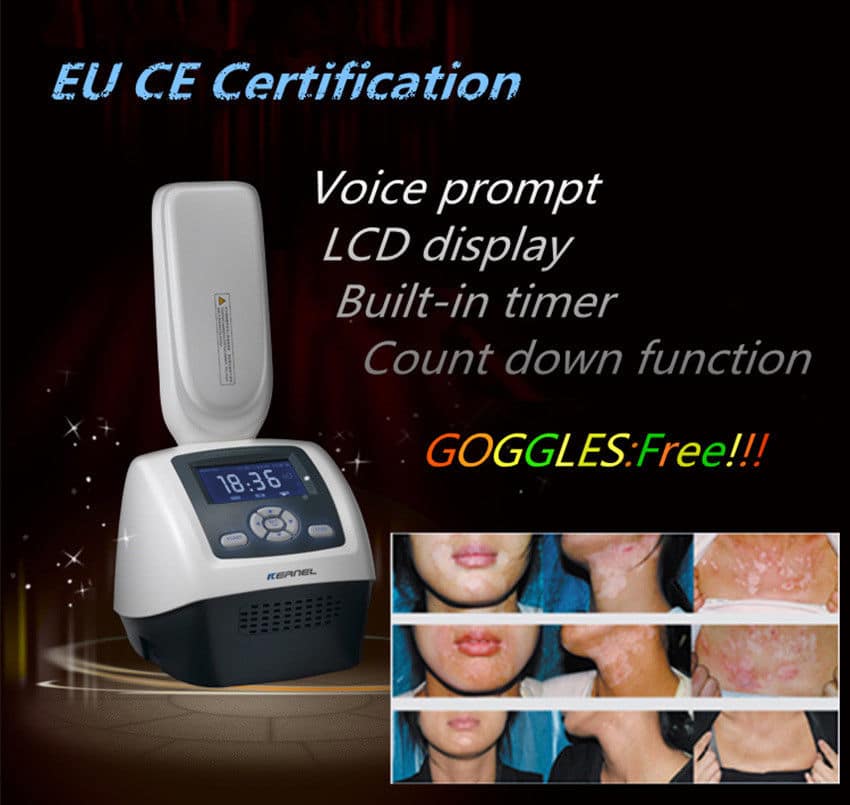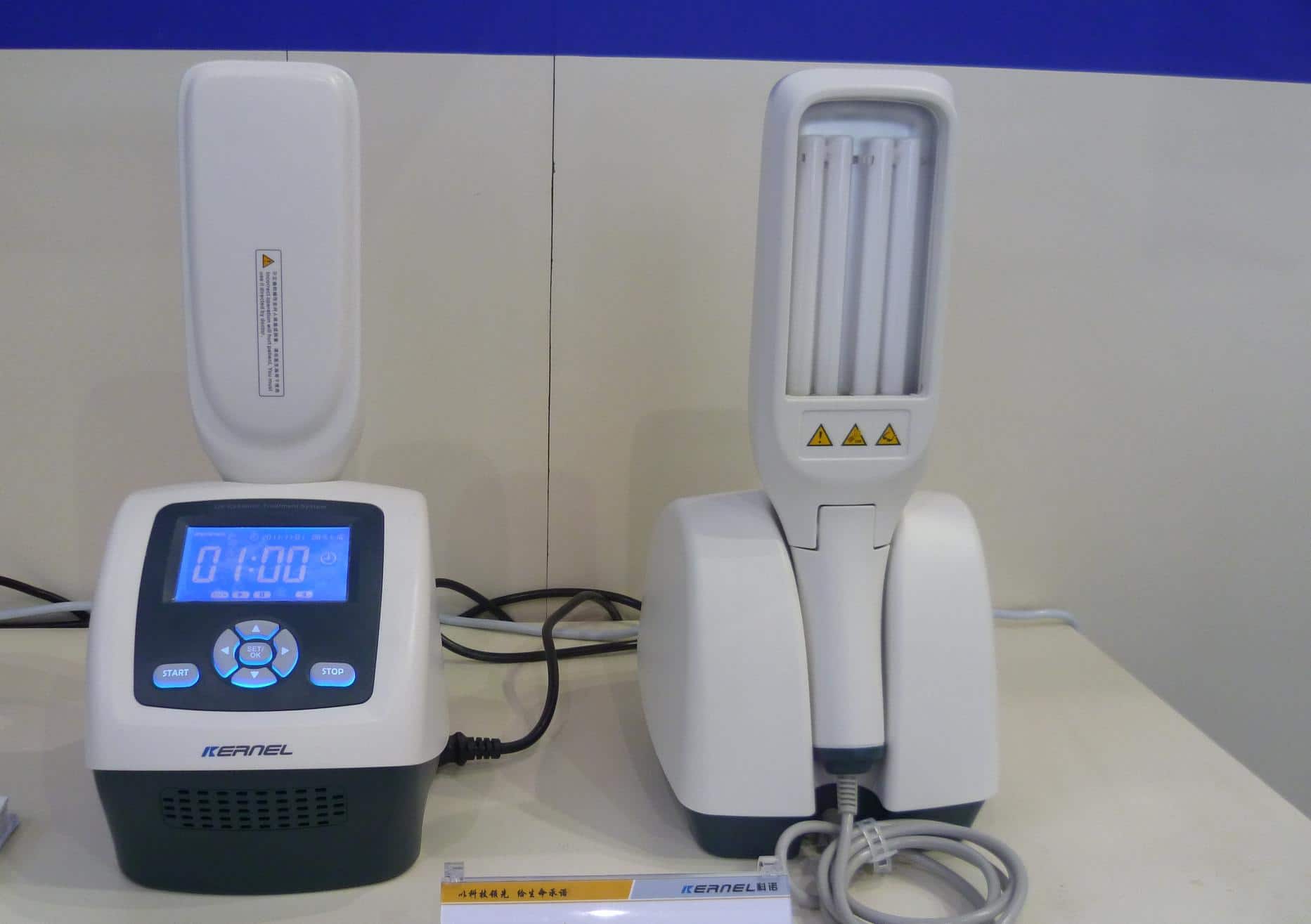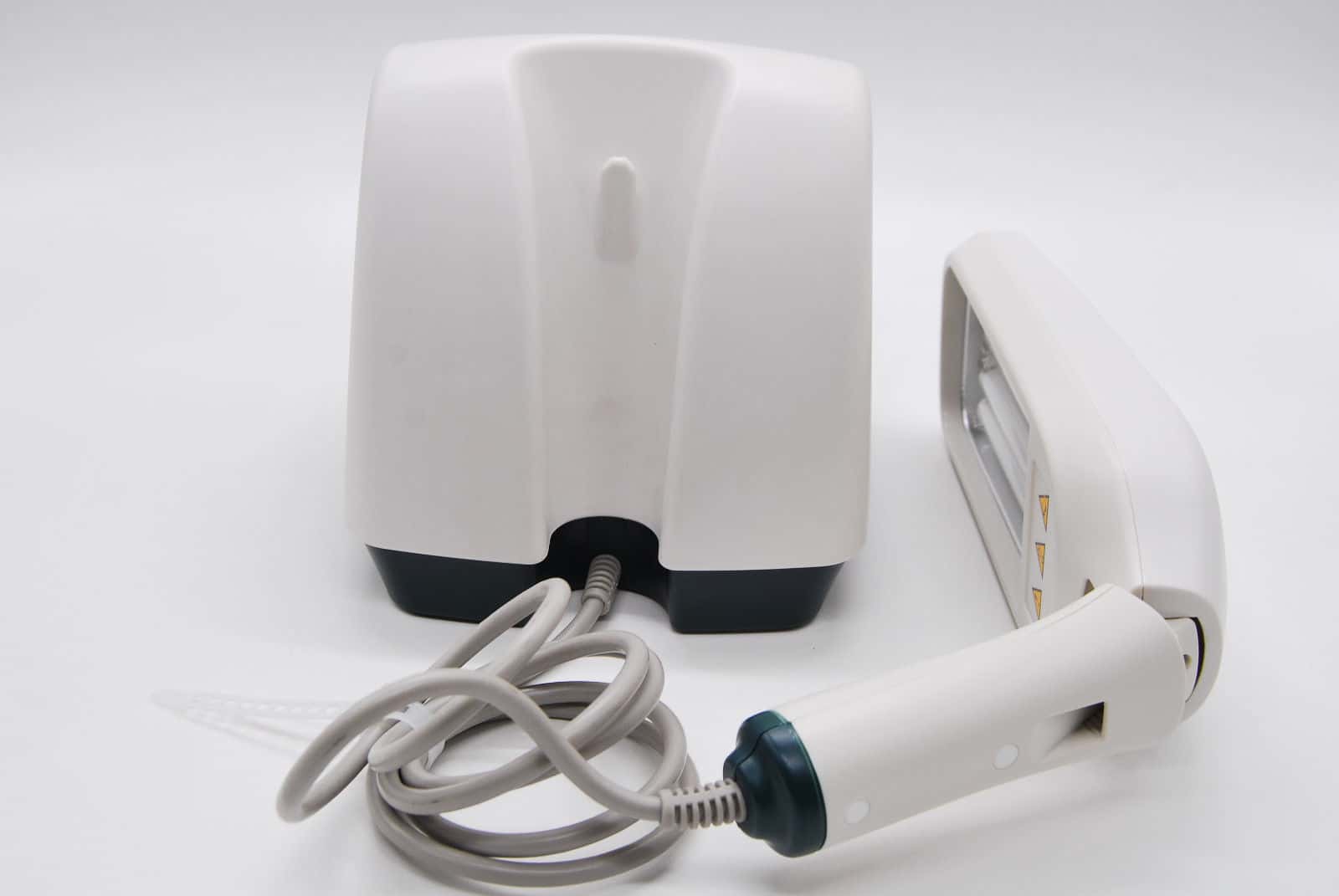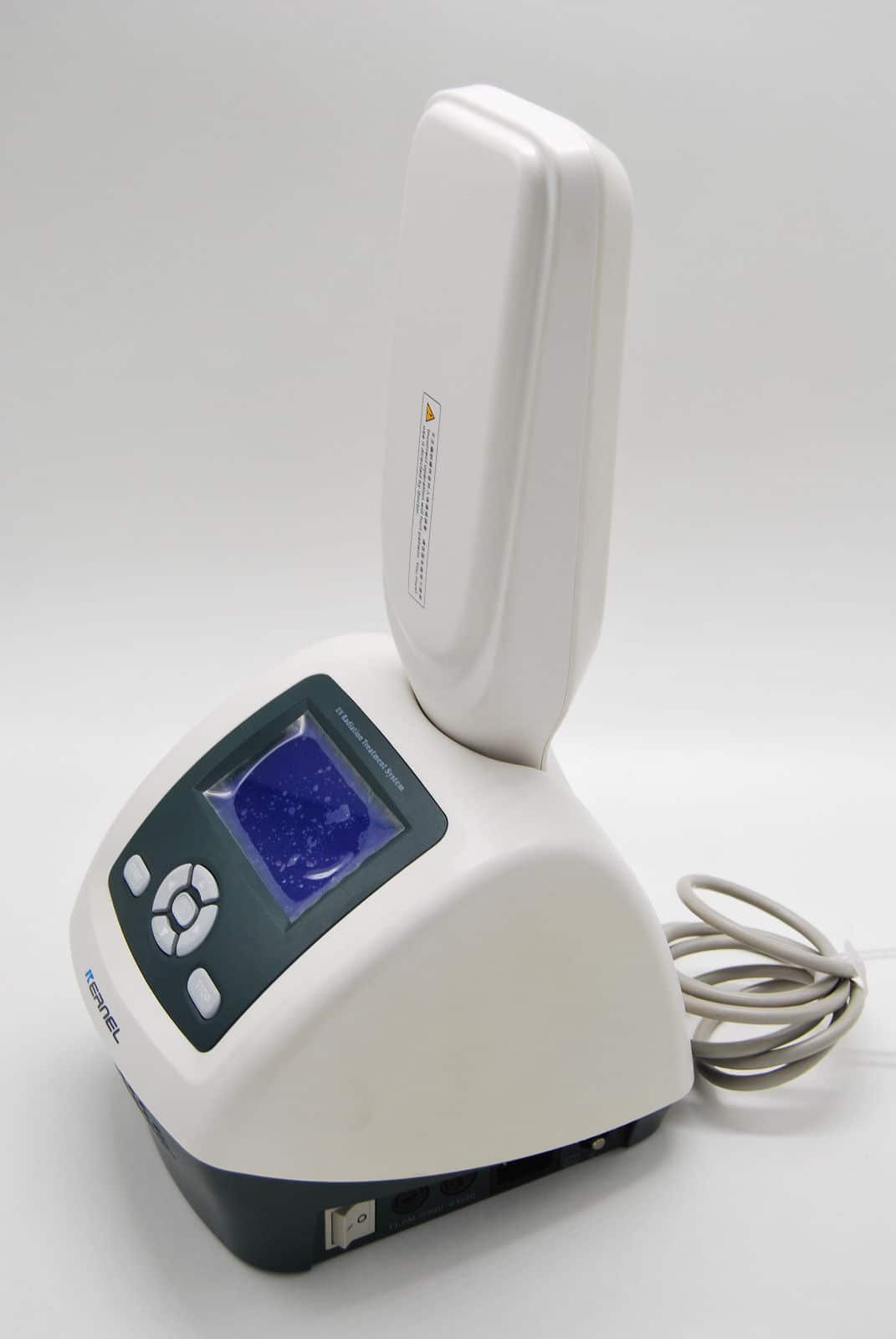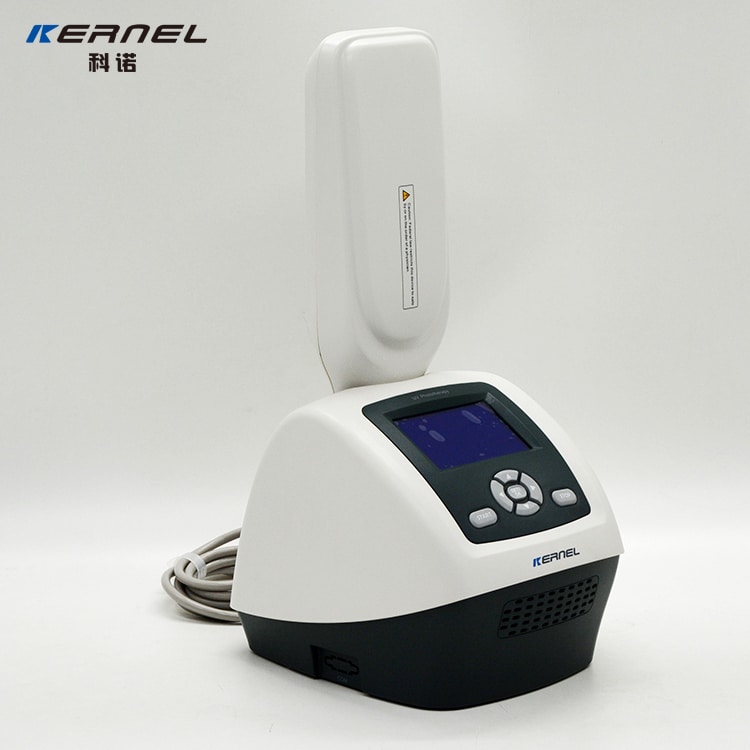Phototherapy Double UVA-1 with Timer Voice Prompt
Original price was: $399.$389Current price is: $389.
UVA1 penetrates deep into the reticular layer of the dermis, acting on fibroblasts, dendritic cells and inflammatory cells, particularly T-cell lymphocytes, as well as mast cells and granulocytes.
UVA1 irradiation induces apoptosis (cell death) in the presence of active oxygen molecules, such as singlet oxygen, hydrogen peroxide, or superoxide radicals. It activates programmed (induced) and non-programmed (natural) cell death.
The success of UVA1 in atopic dermatitis was found to result from UVA radiation-induced apoptosis in skin-infiltrating T-helper cells, leading to the loss of T cells from eczematous skin. The effect of UVA1 in inducing T lymphocyte apoptosis may also help treat cutaneous T cell lymphoma (CTCL).
UVA1 also activates fibroblasts to produce matrix metalloproteinases, which break down excess collagen in the extracellular matrix. is why it is useful in sclerosing (scar-like) skin conditions.
SPECIFICATIONS:
• Philips UVA-1 bulb 365 nm (model: PL-9 9W/10/2P)
• Voice Prompt; LCD Timer
• Integrated Power Adjustment
• 110 V (U.S./Canada/Other) or 220 V (UK/Europe/Other) power cord adapter
• Built in fuses: 2 micro fuses
CONTENTS
• 1 x Box
• 1 x Stationary UVA-1 Phototherapy Device
• 2 x UVA-1 bulb 365nm (Philips, Model: PL-S 9W/10-2P)
• 1 x Power Adapter 220v or 110v, US or EU Plug adjusted to your address or requirement
• 1 x UV glasses
• 1 x Instruction Manual
ATTENTION:
By Purchasing This Product, you agree with our terms and policy

